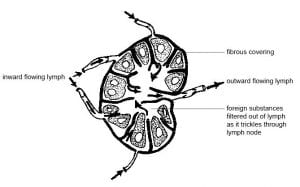What is it?
In March of last year, scientists discovered a new organ inside humans. It is called an Interstitium. Located all over the body from under the skin to lining the digestive track, these fluid filled spaces are believed to act as shock absorbers to protect tissues during daily functions.
These sacs do not appear on standard microscope slides because the process of treating tissue samples with chemicals drains away the fluid which explains why they have been missed for so long. They were discovered by using newer imaging techniques that did not require the use of chemicals.
The Interstitium could help cancer research as these findings explain why cancer tumors that invade this layer of tissue which are filled with lymph spread to the lymph nodes.
lymph and lymph nodes
Is it an organ?
In order for a body part to become an organ, there needs to be a general consensus in the research community. Thus it will take a little time in order to characterize it as an official organ. One case for calling it an organ is the fact that 1/3 of the body’s water called interstitial fluid is in this connective network of the interstitium. In addition, the interstitium helped cast a light on what the other 1/3 of the body’s water does.
Personally, I do believe it should be categorized as an organ as an organ is defined according to the Webster Dictionary as a part of an organism that is typically self-contained and has a specific vital function. The interstitium is self contained and while there is no definitive answer to what it does yet, it does seem to play a vital role in shock absorption and containment of lymph. As it becomes more clear what the interstitium specifically does.
I am also excited to see future research on it because it might lead to new medical advances especially in the field of cancer.



Leave a Reply